Planning out a Programmatic SEO Bot to Automatically Conquer SERPS
For those not familiar, we’re now in AI marketing season here. In my last post I shared my overall AI Launch Marketing Agent plan. This post collects together the first aspect of that larger agent: programmatic SEO.

Building an AI pSEO Bot:
AI Programmatic SEO Bot: The Plan
I need to give my Launch Marketing agent the ability to generate relevant, high quality, useful content. While the whole world slowly adopts AI-first resource finding, Google and other search engines still account for the mass majority of search traffic.
There’s no getting round the fact that programmatic SEO, (pSEO), is a crucial tool in todays web-business environment.
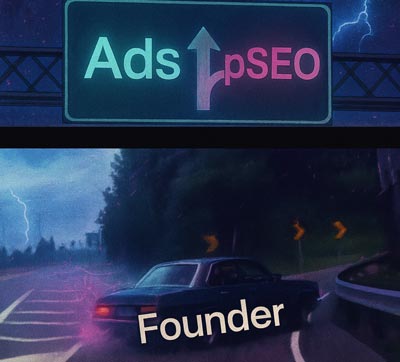
To that end I’m going to wrap everything I’ve learned over the years into a single set of endpoints and pass them on to my AI launch marketer.
Overall Aims for my pSEO AI:
- Generate helpful content
- Generate content which ranks well in Google & AI
- Stay as far away from spam as possible
My journey with SEO started almost 20 years ago when I first learned the power of grey hat SEO. Back then I wrote a scraper to rip directory info from a commonly known national directory, then used that to build out tens of thousands of pages.
It worked back then, and drove a lot of ‘free’ traffic.
Now things are a little different, but the premise remains the same:
Write/Generate/Prompt high quality web pages and get them ranking well in Google.
Then we’re going to amp up and do it at quite a scale.

New here? Welcome! This is the journey of building a 100% automated AI business in 2025. You’re jumping in after we’ve already kicked things off, so you might want to catch up first.
Check out these key posts to get the full story—and don’t forget to subscribe for updates and exclusive perks:
The 4 Columns of pSEO
Currently I see 4 key ‘columns’ of pSEO that are still working. All of which could be created somewhere along the spam<->epic spectrum.
- Blog posts / Articles
- Free Tools / Calculators / Microsites
- Quizzes
- Glossary / Directory

For those not familiar with these different content types, there’s a Woody walkthrough below. If you’re familiar with them, please do skip ahead.
pSEO Blog Posts or Articles
The arms race to make tools that generate content which passes “AI checks” is well underway. I think it’s safe to say almost anything you read online now may be AI generated, (this is not, and never will be, by the way).
The premise here is to have code write articles or blog posts which search engines rate as highly useful to specific keyword audiences.
Say you’re selling 3D Printers…
You could use an automation, (or tool), to generate a blog post each day talking about different aspects of 3D printing.
Each post would pop up on your blog; a small ‘hook’ designed to catch a Google fish.
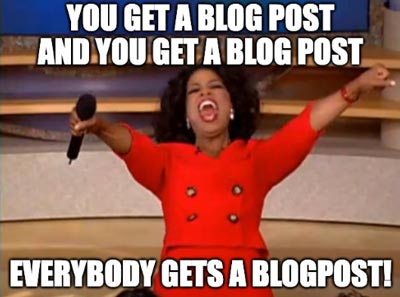
The best practices I’ve seen used for pSEO blog posting is to generate 1-2 posts a day with a variety of approaches, then over time monitor the ‘winners’ who place in the top 10 results for a trafficked term, then go back and optimise them manually.
John Rush’s SEOBot is the most well known product if you’re looking for a complete tool. I’ve tested it, it’s fairly good.
For this though, I’m going to roll my own.
Free Tools, Calculators, & Microsites
Before generative AI, this was my favourite method of generating traffic with dev-based SEO.
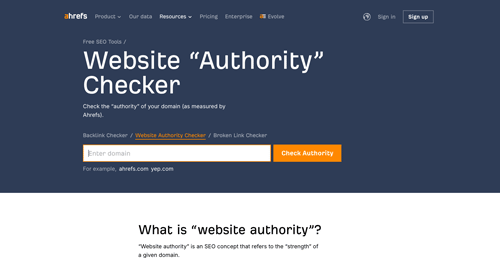
Simply put, you make a free tool, a calculator, or a whole micro site. For example:
- “Domain Authority checker” (Free tool)
- “Days until retirement” (Calculator)
- “Map of car garages in UK” (Microsite)
Executed effectively, it’s a trade of developer time for funnel growth. People have made whole fortunes just out of making ‘calculator’ websites that rank well.
…and given vibe coding, this is a gold-rush era activity in my opinion.
These microsites or tools can be super niche, or broad. Some examples which worked well for me in the past:
- Timetrackerlist .com – I made a comparison site for time tracker apps. This brought in a lot of traffic to my then-MVP, EverClients
- FestivalMap .eu – I made an interactive map of festivals happening across Europe. Again, worked well to drive traffic to my festival-matching app
- Woodys Projects – on my site I list random eclectic projects I’ve taken on over the years. This brings in an equally eclectic audience
A Note on Microsites: If there’s a search term which is valuable enough to you, it can be savvy to make a whole new site, even for 1 feature or calculator. Having a single URL that’s just 1 tool makes it much easier psychologically for people to share. You can also test more outlandish SEO practices on that URL and not risk your main ‘money’ site.
pSEO Quizzes
This year I’ve dabbled with online quizzes. I made an AI Quiz Wizard and have been testing it out on here and other sites.
Here’s a very basic test on my personal site over the past 90 days:
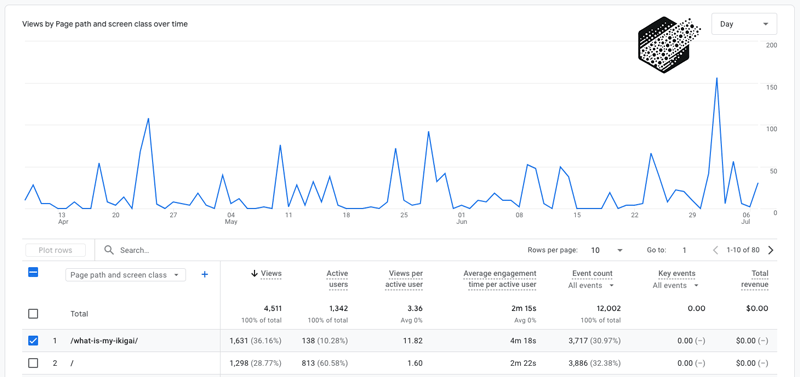
As you can see the simple quiz has started receiving more traffic than my homepage. I don’t really promote my main site anywhere, (I’m all in on ProfitSwarm 😬), so the numbers aren’t massive; but it’s effectively free traffic once set up.
…the other bonus to quizzes is that they can be a great lead magnet.
You may have even subscribed to me because you took one an AI quiz here on ProfitSwarm.
I will be testing these, (and you!), more!
Glossary or Directory Hubs
Lastly, and honestly, the least, is glossaries. Making a glossary of terms for your niche is probably one of the quickest pSEO tasks going, (especially with AI!)

In essence you gather data, (or generate it with AI), on niche jargon and present it as content-rich way as possible.
Think about sites like online thesaurus or ‘industry terms’ hub pages.
I still do these for each niche site I make, but given the low barrier to entry, I suspect these will become less and less meaningful in producing traffic.
Overall Automation Design
I started out designing this as one beast automation. That soon started to blow my head off.
Here’s the simplified plan:
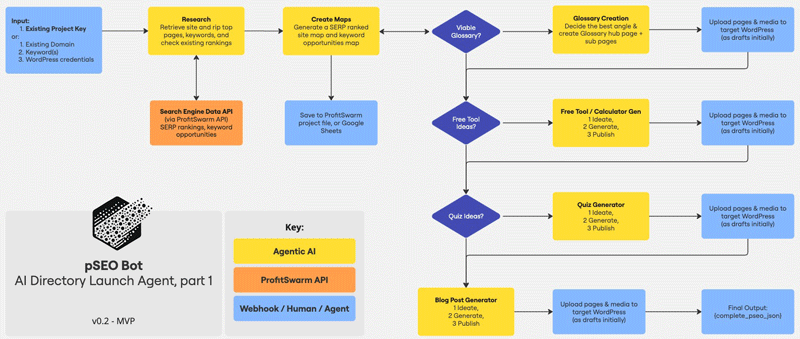
Effectively it’s:
Grab all the data -> work through the 4 columns -> report
Realistically each of the four columns will be a sub-automation/agent.
It’s going to be a big set of kit, but I’m building it to be almost site-agnostic, so this’ll work for all other projects I want to promote.
How to Host AI Built Programmatic SEO Content
As you’ve probably read above, I’m building this pSEO bot to publish all content to a WordPress installation.
I’ve built stuff for WordPress for 20 years, so for me it’s a natural platform for hosting web pages. I like it because:
- Super easy management/editing
- Open-source and very stable
- I have existing SEO, security, and home-rolled plugins which work in synergy
- Easy to publish via REST API
That said you could easily switch out the last stage of these bots to point to:
- Raw HTML pages (probably the fastest load-speed)
- Framer, Webflow, etc.
- Other CMS’s (Drupal? idk)
Final Considerations when Automating pSEO
Here are a few points which I’m going to bake into my automations, that I’d recommend you consider if you’re doing similar:
AI SERPS – Increasingly people are using GPT’s to search for things. It’s important that we keep ourselves up to date with best-practices for optimising our content to be taken up by AI models
Site age – These techniques are likely to work better, quicker, and safer on existing sites. If you throw up a brand new domain and pump out 10,000 pages generated by AI, it’s going to get banned. The other benefit of leveraging existing/aged sites is that you can use existing content to train your models, and so preserve the vibe
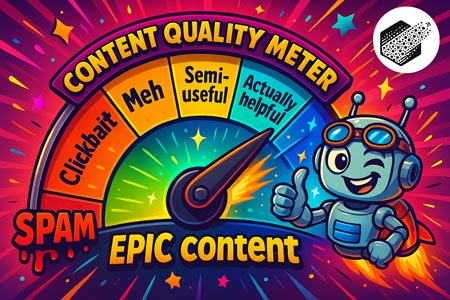
This is not spam! – It’s easier than ever for search engines to spot low-quality, half-arsed content. Make sure you’re making good stuff, even if it’s AI assisted
Building an AI pSEO Bot: Getting Started
That’s enough talk, I’m itching to get started! First up I’m going to build out each column individually, starting with the “Glossary” column. Then I’ll wire them all together and we can see what dent it makes on traffic.

Is it Going to Work?
What do you think? Please add a comment and guess at my success rate here (out of 1-10!)



Leave a Reply